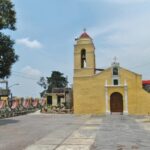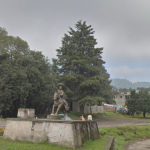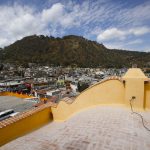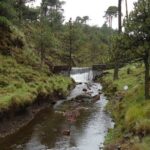_
Santa María Magdalena Petlacalco is known to practically everyone, more simply, as Magdalena Petlacalco. One of Tlalpan’s 12 original settlements, the ancient Náhuatl name can be translated as “place of mat houses.” This reflects the long tradition of weaving baskets and mats from the locally grown reed-like plants.
The Christian name is attributed to repeated apparitions of Saint Mary Magdalene. According to tradition, she appeared frequently in the caves surrounding the town during the colonial era. The apparitions happened so often that the town dedicated itself to her legacy.
Founded in the 15th century, the town’s legacy is Nahua, although the first settlers were at often war with the Mexica people of Tenochtitlán. In 1682, one José Tello de Meneses, by then quite wealthy, bought up most of the previously inhabited community land. Manuel Ávila Camacho, a right-hand man to President Lázaro Cárdenas returned much of the land to the community for communal farm–use only in 1938. The land is still an important part of the heritage and identity of the townspeople.
The first apparition occurred in 1699. Although a chapel is believed to have been built soon after, church construction began in 1725 and finished in 1730. Only in 1966, the parish built the clocktower to the right of the much older façade. The church has interior side altars and a main altar in the Neoclassical style. The single nave is in three sections and the presbytery has a neoclassical altar with an 18th-century wooden sculpture of Santa María Magdalena.
 https://www.facebook.com/MagalenaPetlacalco
https://www.facebook.com/MagalenaPetlacalco

Nearest at 1.77 kms.

Nearest at 1.89 kms.

Nearest at 2.11 kms.

An all-but-forgotten monument to the Tepaneca people in Ajusco...

One of Tlalpan's most remarkable volcano-side towns...

A monument along the bikeway takes on new meaning for cyclists heading to Morelos.

One of Mexico City grandest of national parks, Ajusco has something for everyone.

A homey little town on your way to the park, this Ajusco may be the most classic pueblito in Mexico City.